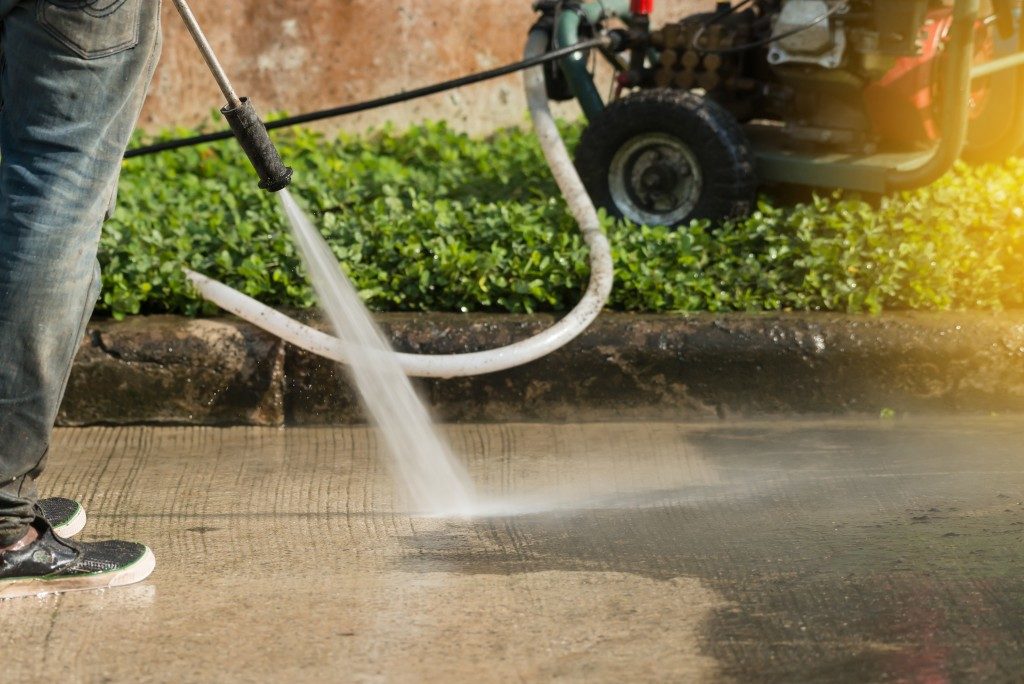When faced with a concrete crack, it is easy to be tempted to walk into a store and pick the best-looking product for the repair. There are after all numerous tutorials online on how to apply these products and efficiently seal any type of crack.
Proper repair of concrete cracks, however, involves more than the right product. The repair starts with proper surface preparation of the damaged concrete using different methods. This guarantees an optimal repair since the repair product adheres securely to the surface.
Abrasive blasting using different equipment available at stores dealing with concrete repair products is one of the common surface preparation techniques. Here, high-velocity abrasive particles that are driven by centrifugal force, water or air are used to clean the surface. Here are the different concrete abrasive cleaning methods.
Air Abrasive Cleaning
This is the conventional abrasive cleaning method. A dry abrasive is propelled onto the concrete surface to be repaired to remove surface contaminants. The abrasive is then cleaned off with a gust of clean air across the surface before repair of the crack begins. Exceptional expertise is vital to ensure obstructed and horizontal surfaces are thoroughly cleaned. Some states have environmental regulations on the use of air abrasive cleaning, so check first before choosing this as your surface preparation method.
Wet Abrasive Cleaning

There are two categories of wet abrasive cleaning primarily used to control the quantity of airborne dust from your concrete surface. In one option, water is added to a mixture of sand and air while in the other alternative, only water under high pressure is used for cleaning. Both wet abrasive cleaning methods include a corrosion inhibitor to minimise damage to the steel in your concrete. The surface is then rinsed and left to dry before the repair product is applied.
Vacuum Abrasive Cleaning
This is sometimes called dustless or dust-free blasting. The vacuum abrasive cleaning machine comes with blast and suction hoses, which run from the blast tool and are attached to a control unit. The suction hose collects the spent abrasives for recycling and leaves the concrete surface clean. Vacuum abrasive blasting, however, is expensive and generally used in places where wet or air blasting is not tolerated.
Centrifugal Abrasive Cleaning
This method involves the use of machines with bladed wheels that are motor-driven. The wheels hurl abrasives against the concrete surface being cleaned at high speed. The method is generally used to clean horizontal concrete surfaces before the application of coatings and polymer concrete sealants. Centrifugal abrasive cleaning takes minimal labour and time and achieves a clean and uniform surface with minimal residue. It is, however, not generally used on uneven surfaces.
These concrete surface preparation methods require a range of high-tech machines. For people handling a small repair project, buying the equipment is cost-inefficient. Thankfully, you can hire the machines inexpensively from some concrete repair product stores. Buying the equipment is, however, the convenient option for concrete repair contractors. Though it might require a considerable upfront investment, the returns will be worth it for your company.

